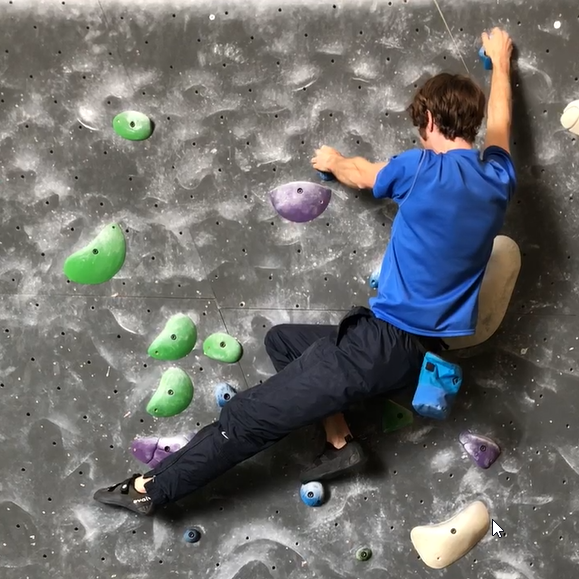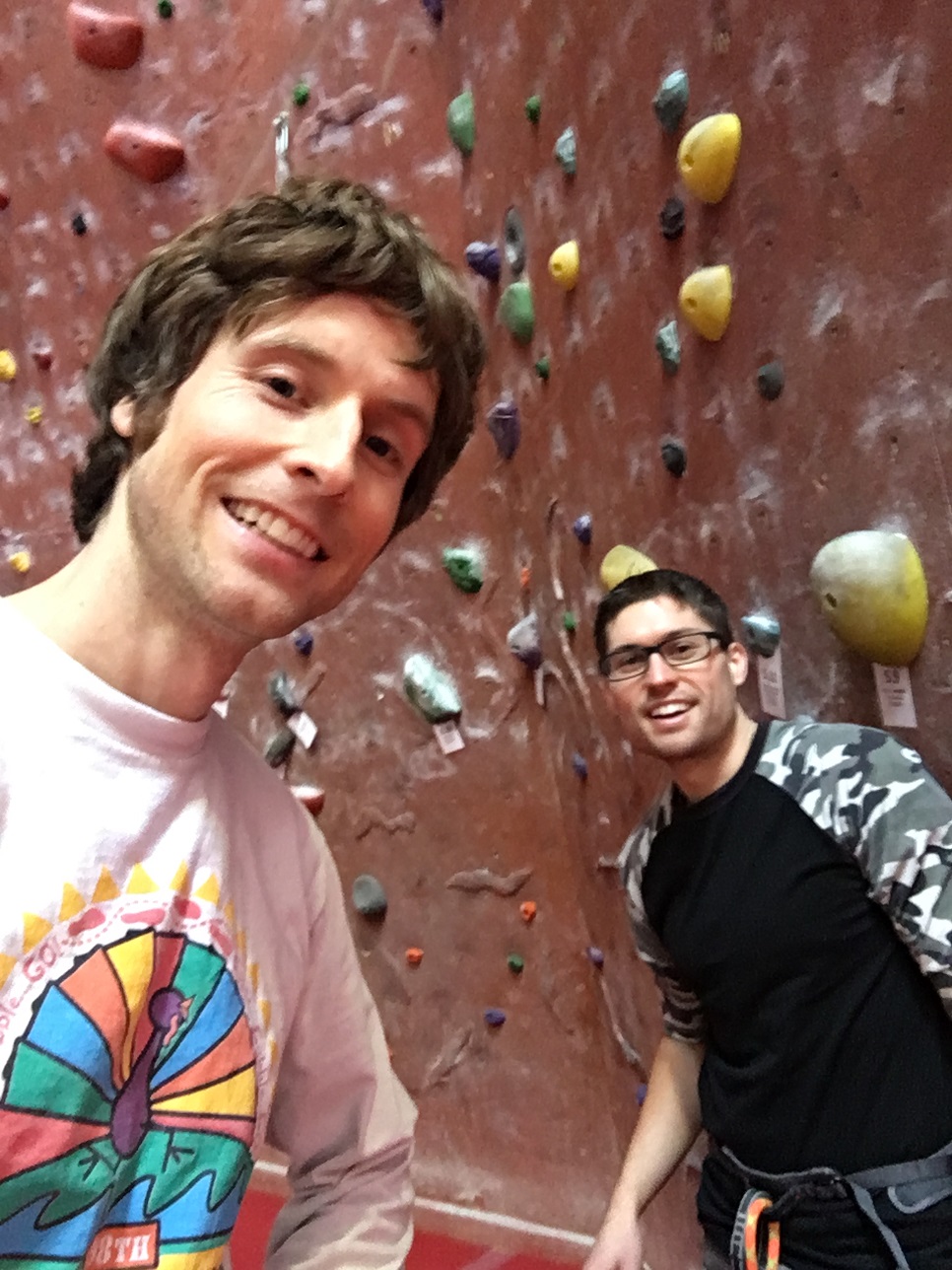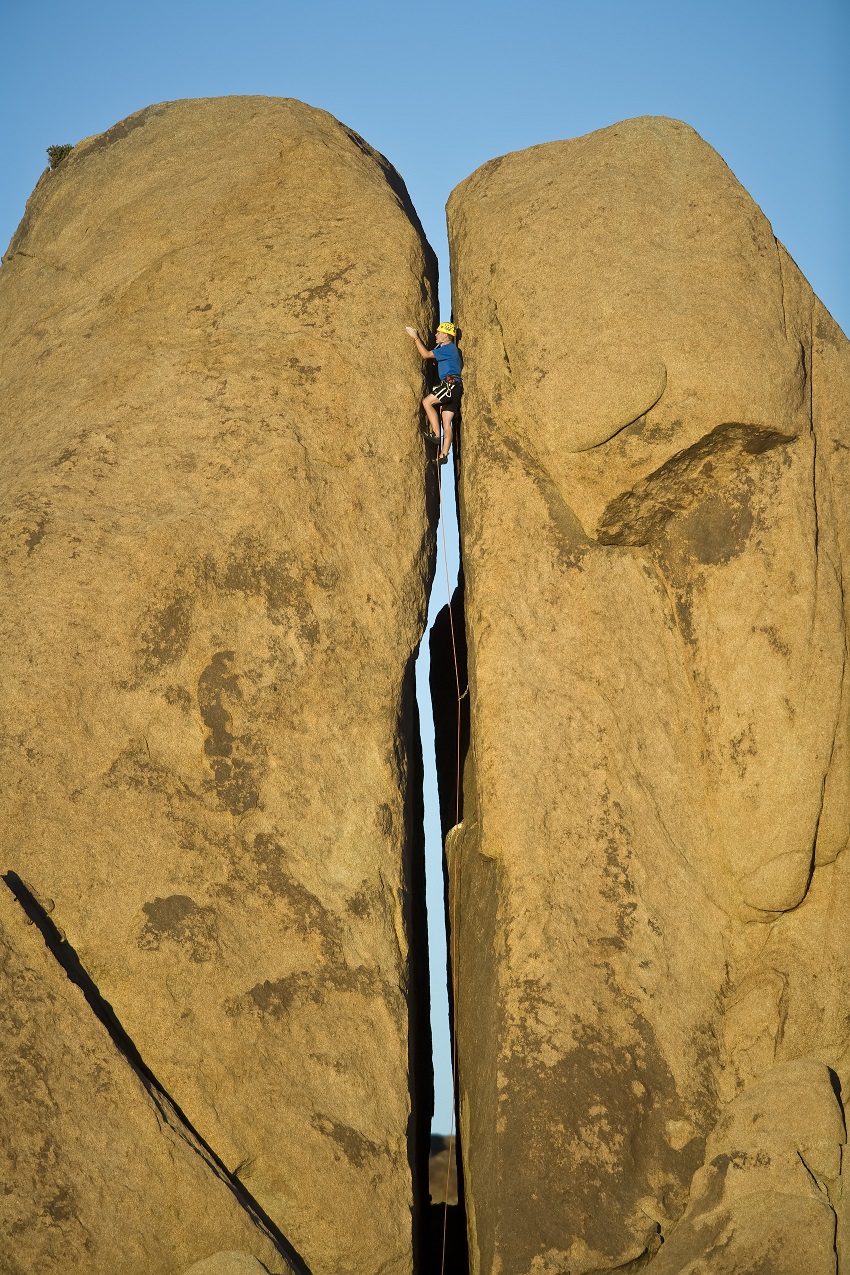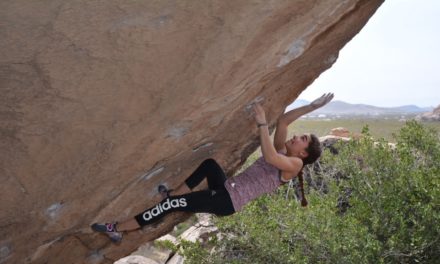Flagging
Improve your climbing skill with a balancing technique called flagging.
Success in climbing is determined by a combination of your strength, skill, mental capability, and health. If your climbing is not progressing, then it is probably because you have neglected one of these pillars of climbing.
Here we are going to improve your climbing skill with a balancing technique known as flagging.
Flagging is the extending of a leg out to the side to keep your center of gravity over your foot position on the wall. Don’t worry, we are going to unpack that sentence.
This technique provides 3 distinct benefits:
- Flagging is necessary when you need to reach to the side for a hold.
- Flagging is useful at helping to reduce the energy required to reach holds that are slightly off to the side.
- Flagging prevents you from swinging or rotating off the wall. (When you rotate off the wall it is called “barn door.”)
Flagging is one of the first climbing moves we teach right after you learn the essential climbing habits.
Essential Climbing Habits
- Climbing with straight arms
- Looking at your feet
Essential Climbing Moves
- Flagging
- Backstepping
Why is flagging important?
For those who are new to climbing or climb infrequently (less than 2 times per month), the challenge is getting up a climb without getting exhausted (or “pumped” as we say in the climbing world) halfway up the wall. That’s why all the habits and moves listed above focus on teaching climbers how to better use our feet and legs so that our hands and arms are doing less work. Flagging serves this purpose by manipulating our center of gravity so our weight is centered over our feet.
Flagging is one of the essential moves focused on helping you feel comfortable on the wall, reach further away, stay balanced on the wall, and save energy so you can climb longer. That’s a lot of benefits from one move! So, pay attention and master this technique.
So, how to flag?
Try standing on two feet and see how far to the side you can reach. You can only reach so far before you fall over. At this point you have two options: 1) use a side pull so you can lean farther, or 2) extend a leg to keep your center of balance over your other foot. Extending your leg like this is called flagging.
Rigid Climbing. Searching frantically for a hold with the left arm.
Leaning farther to the left with the right arm working hard. Or save the right arm and take a fall.
Leaning further to the left with the right leg flagging to reduce the work on the right arm.
Three types of flagging
- Normal Flag (a.k.a. Side Flag) – where the flagging foot is extended out on the same side of the body. This is common when one hand and the opposite foot are both on the wall.
For example, the right hand and left foot are stationary on the wall, while the right foot is extended out to the right side. (see stick figure above)
- Reverse Outside Flag (a.k.a. Rear Flag) – when the flagging foot is crossed behind the other leg so that the climber can reach to the same side.
For example, the left hand and the left foot are stationary on the wall, and the right leg is crossed behind the left leg so that the right arm can reach to the right.
- Reverse Inside Flag – the flagging foot is crossed in front of the other leg (between the other leg and the wall) so that the climber can reach to the same side. The Reverse Inside Flag is similar to the Reverse Outside Flag except that the flagging leg crosses in front of the other, stationary, leg.
For example, the left hand and the left foot are stationary on the wall, and the right leg is crossed in front of the left leg (between the left leg and the wall) so that the right arm can reach to the right.
The Reverse Inside Flag seems odd at first since it’s less common for there to be more room in front of the stationary leg. But, on overhung climbs (the wall is leaning back) or when your whole body is turned so that the hips are against the wall, this can be a much easier way to extend the flagging leg.
Here are some examples of Brian using the Normal Flag (a.k.a. Side Flag) with the left leg to climb up some bouldering routes. In each of these photos, the left leg is being extended to the left side so that the right hand can reach up to the next hold.
IMG_1296flagging
IMG_1309backstep and flag 20 sec
In the above two flagging pictures, the leg is extended quite far to account for the next hold being high and off to the right. Reaching for the high right hold would result in the center of gravity being to the right of the foothold and cause Brian to rotate off the wall — not desirable!
Note that in the second photo, the hold is very far to the right so the left leg is held straight with the toes pointed to shift the center of gravity as much as possible back over the right foot. Keeping the center of gravity consistently over the right foot reduces the amount of motion, rotation and slipping that will be experienced by the right foot. This allows the climber to support more of their weight confidently on that right foot which reduces the energy required by the hands and arms.
IMG_1298backstep and flag two times (at 8 seconds)
In the third flagging picture, above, the left leg is slightly extended so that the body can curve to the right around a hold which is being used by the left hand at waist height. The flag move was not required for the climber to reach the next hold but it allowed the climber to bend to the right around a hold while keeping their weight over the right foot on the wall. This also helped slightly extend the left arm in this position. Straight arms are the most efficient for conserving energy. Even if you can’t get them all the way straight for every move, it’s better to be mostly straight.
Shut the Barn Door!
Another advantage of the Normal Flag is that the inside of the flagging foot can press against the wall. This will keep you against the wall and prevent you from swinging away from the wall like a barn door. “Barn door” is what climbers call it when you swing (or rotate) off the wall. When holding onto the wall with two points, i.e. one hand and one foot, each of those points acts like a hinge. The body will want to rotate around those hinges like a door. The flagging foot can keep the body from rotating by pressing against the wall.
Challenges
In learning how to flag you will encounter a few challenges across the various pillars of climbing success (remember those? We listed them at the top of the article: strength, skill, mental strength and health).
- Strength: Many supporting muscles are called upon to execute even a simple flagging move. The flagging leg should be held stiff in order to accurately control your balance, and the stationary leg needs to have adequate stability in the ankle and hip, as well. Stability in the hip and ankle requires strength and flexibility. Work on strengthening the hip flexors and the supporting muscles in the ankle. The hips and ankle will maintain your balance on small foot holds while your legs, arms, and core are pivoting around your center of gravity.
You will need to practice this type of motion. We consider this so important that Begin Climbing workouts always include hip exercises with leg strengthening, balance, and yoga poses with your core engaged. Fortunately this is not difficult to train.
Strength exercises:
-
- Perform knee raises while hanging, and side leg lifts while lying down and standing up.
Flexibility exercises:
-
- Tight muscles restrict your movement and require additional strength to move your body. Yoga stretches like Warrior Pose will help open up the hips. Continually improve your flexibility to reduce the energy it takes to hold climbing moves like flagging.
- Skill: Balance is key for efficient flagging. The more stable you feel standing on one foot on the wall, the more confident you will be with extending your flagging leg and letting your arms relax. It takes time to improve our balance. Gymnasts, dancers and skaters practice this for years, and climbing is no different.
Balance exercises:
-
- Even though the best way to practice is on the wall, you can actually develop your balance at any time of the day. I suggest practicing balance while in line at the store, washing dishes, or brushing your teeth.
-
- Slacklining is a very popular activity for improving balance in the climbing community. It is is fun for climbers of all abilities, and can be practiced on recovery days when your body is resting.
- Mental Capability: Taking a leg off the wall and extending it into open space or to an empty section of the wall is a very unusual (and possibly frightening) position to assume. You need to fight the instinct to keep all your hands and feet on the wall at all times. Flagging will make your climbing immensely easier and more efficient. You will need to retrain your brain to allow yourself to do this! Start by working on the three points above strength, skill, and mental capability.
Pulling it all together
At the gym. At your next gym session, try to use flagging as much as possible. The eventual goal is to use the most efficient body position for each move we learn, through practice. Our bodies and minds can only learn so many things at one time, so you will need to focus solely on flagging for several routes in order to get a feel for how to properly use this move on the wall. You will also be able to identify whether your balance is good enough, and your hips are strong and flexible enough to climb smoothly and efficiently. You will know that you have developed competence with flagging when you are able to climb smoothly and quietly on the wall while employing flagging during your climb.
-
- Climb the same route 3 times employing flagging as often and as smoothly as possible.
- On-sight (an ascent with no prior knowledge, without any rests or falls) additional routes with varying difficulty, terrain, and overhang, and employ flagging as you go.
Remember:
To become the best climbers possible with the least amount of effort, we need to be intentional about our training. Spend a session focused on the skill of flagging and continue to develop your flagging into a solid skill you can employ without even thinking. Do you consciously employ flagging to save energy while climbing? Is there another climbing move or skill that unlocked a new grade for you? Tell us in the comments below!





